Like a lighted pathway, the ISTE Standards tell me where to go with my digital-age instructional practicesCirca 2001. I had accepted a new role as a "Technology Mentor Teacher" which meant that I would be helping teachers to effectively integrate technology into their instructional practices. I'd be coaching, model teaching, and helping to write "snazzy", tech-infused lesson plans. Now for those who were teaching in 2001 (or those who were students at that time), you might remember that technology in the classroom was... well, scant. There just wasn't much of it. Not to mention, it had to be hard wired to the Internet... except that often, those connections didn't exist in the classroom. (It was hard to do tech infusion without much tech.) I was lucky because the teachers I worked with had 5 computers for student use inside the classroom, but the whole idea of tech infusion was in its infancy and we were all learning together. Additionally, in 2001, there weren't a lot of models for effective technology integration. No TPACK; No SAMR; No Triple E Framework. Nor was there much tried and true experience that could clearly guide teachers in the right direction. There was, however, the ISTE Standards! *cue inspirational lighting and music* At a time when classroom technology was brand new, "stuffing technology into a lesson plan" because it was new and fun was more common than any of us would like to admit. We knew we shouldn't be doing that, but... it was just so shiny and FUN! And did I mention, we didn't have models to guide us? Thank the heavens for the ISTE Standards! Released by the International Society for Technology in Education in 1998, the initial version of the ISTE Standards (called "NETS" back then), alongside learning how to operate a computer, also emphasized technology for research, productivity, creativity, and problem solving. These standards represented how technology could enhance learning, and so became my north star... serving as a guide to help both me and the teachers I worked with to recognize the difference between "using technology to enhance learning" vs. "using technology for technology's sake." They illuminated the destination and clearly pointed us in the right direction. The ISTE Standards (for Students) have gone through a couple of iterations since the 1998 version. And you know what? They've only gotten better. The 2007 version of the standards shifted its focus from USING technology to using technology to LEARN. And the 2016 version of the Standards push the boundaries even further as they aim to TRANSFORM teaching and learning. In my present role, I talk to a lot of teachers who want to infuse more technology into their teaching practices... who know that technology can and should be used for more than leveled reading tests and canned curriculum software. Teachers who want their students to create innovative learning products, solve problems, and learn with others around the world... and who know that technology can help. If you are one of those teachers ^^, the 2016 ISTE Standards can be your best friend. The ISTE Standards can light the path of possibility for more creative, collaborative, and student-centered approaches to teaching and learning. Today, they still serve as my north star and are, by far, still my favorite jam. Like a lighted pathway, the ISTE Standards tell me where to go with my digital-age instructional practices Getting Started Listen, there's a lot of meat to the ISTE Standards. It would be easy for an enthusiastic and highly effective teacher to take a first look, and feel a little overwhelmed & frustrated not knowing where to begin. Sometimes the right thing isn't always the easiest thing to do! And the ISTE Standards are the "right thing" when it comes to tech integration. Let's see if we can make it easy to get started. To that end, I'd like to offer three SUPER SIMPLE ways to dip your toe into the ISTE Standards water, so to speak. Each of the ideas below aligns to at least one ISTE Standard and requires only basic technology skills to get going. Oh yeah, and they're also really powerful learning opportunities. 1. Mystery Skype (ISTE Standards: Digital Citizen, Global Collaborator) Think 20 questions meets the 21st century meets global communication. The premise here is to connect your students with another class somewhere around the world (but don't tell them where). Students engage their prior knowledge, critical thinking, and inquiry skills to guess where the class is located. So many thinking skills involved, and technology is merely the tool. Read more about one teacher's experience with Mystery Skype. Link to Mystery Skype 2. Online Book Club (ISTE Standards: Digital Citizen, Global Collaborator) It's just so simple! Whether you're doing a class read aloud, a literature study, or having students read independently, there never seems to be enough time for all the rich discussion in which you want to engage students. Why not use a digital platform to host book discussions? Cue up some thought-provoking questions, teach students about accountable talk stems, and watch the conversation unfold. Many different tools would lend themselves to digital discussion, including Google Classroom, Edmodo, Schoology, FlipGrid, and Padlet, to name just a few. 3. Virtual Field Trips (ISTE Standard: Knowledge Constructor) Take learning beyond the walls of your classroom! Did you know that many museums, national parks, zoos, and other exciting places offer virtual tours/field trips for students? One of the most amazing things about using technology in the classroom is the way it can transport us to experiences that would otherwise not be possible. How do you find virtual field trips? Here are a couple links to start your search.
We all want to ensure that we are integrating technology into our instructional practices in ways that truly elevate teaching and learning. The ISTE Standards provide a guidebook telling us how students can use technology to become empowered learners, knowledge constructors, and creative communicators. Whether you're tech-savvy or a tech-newbie, you can implement the ISTE Standards. You don't have to master them all at once... you can choose one activity as an entry point to begin. See how it goes. Gain experience. Build confidence. Be Inspired. Let the ISTE Standards point you in the right direction. Cheers, LeeAnn P.S. If the ISTE Standards are already your jam, consider starting your journey to become an ISTE Certified Educator! Check out our session dates and contact me with any questions!
1 Comment
Since digital citizenship is always on my mind, I was thinking that this year, we might just forgo the gym memberships and diets and instead focus on a different aspect of our life that sometimes feels overwhelming and adds (or subtracts) from our overall health and wellness.... Our digital life. Digital health & wellness refers to our physical and emotional health related to living life in the digital world. A few examples of poor digital health include:
Have you experienced one (or all three) of the above repercussions of excessive (or regular) technology-use? Personally speaking... all three. 🙋🏻♀️ Before committing to new digital habits, I recommend first taking time to reflect on your current ones. Why? Because "reflection is the mediator between knowledge and experience." When we think about an outcome (such as sleepless nights and terrible next-days) and reflect back on the decisions (like mindless scrolling), we can make connections that help us to make better decisions the next time. Here are 6 questions we can all reflect on in the new year... parents, teachers, and students.
After reflecting on our habits, we can decide what kind of actions we want to take next. Here are a my top 8 ideas to get started:
Here's to a happy and healthy new year... may we all take one step forward toward increased digital wellness! Cheers, LeeAnn
I used to think the term "digital citizenship" only referred to kids... as in, kids need to know how to be good digital citizens and use technology responsibly. For some reason, I didn't necessarily think of myself or other adults as digital citizens despite the fact that I (and other adults) engage in digital communities including social media on a daily basis. "Digital citizen" was just a kid-term in my mind.
But as I continue to examine my own digital decisions (and make mistakes) and watch others do the same, especially with social media, I realize that I, TOO, AM A DIGITAL CITIZEN!! ...that I am in digital community with others and am constantly faced with decisions about my own digital actions! That I have to grapple with online situations that involve ethics, safety, and my own personal values. That I have to consider relationships and how my social media use could affect them... because teenagers aren't the only ones learning how to fly this digital plane as we build it.
I've come to realize that I can better help students own their role as digital citizens when I own my role as one, too. When I am more mindful of my own participation in the digital world, I become a better role model for my students.
I created a 10-item self-guided reflection resource for teachers. The idea behind this resource is to give teachers (or any adult, for that matter) time and space to really consider their own thoughts and actions as they participate in the digital world... to see themselves as a digital citizen. The resource is called "I AM A DIGITAL CITIZEN" and I'm happy to share it with you - Just click the button below to have the link emailed to you! Feel free to use this "record & reflect" printout alongside the I AM A DIGITAL CITIZEN resource. Enjoy! *THINK before you post* is a simple and effective message to reinforce in the classroom as students begin participating in digital communities/relationships. Versions of this graphic/message have been around for a long time, and there are some attractive posters and downloads floating around. Here's one more version for you... including a link to a PDF version.
Might you entertain me for just 15 seconds? Close your eyes and think of the words “digital citizenship.” I know this might sound corny… but just imagine a full 15 seconds to close your eyes. That sounds nice, doesn’t it? What came up as you let “digital citizenship” permeate your thoughts? Was it an image of Internet safety or warnings of stranger danger? Did you think about students incessantly “snapping” each other? Did cyberbullying enter your thoughts? Or, did you think about physical, mental, and social-emotional health and wellness related to technology use? Chances are, many of you considered a topic from the first grouping. Online safety, social media use, and cyberbullying are among the topics that have, for years, comprised the digital citizenship repertoire. And while digital health and welfare is included on Mike Ribble’s longstanding list of 9 digital citizenship elements (2004), this aspect has not been prioritized to the same degree as other dig cit elements. When we think about everything that “responsible and ethical technology use” entails, it makes sense that some aspects are prioritized at different times according to what seems most pressing and timely. To that end, the term “digital citizenship” and its meaning have gone through somewhat of an evolution since the early 2000s, in line with the evolution of technology in the classroom. I wrote about that in a previous blog post. The gist is that as technology was first entering the classroom, digital citizenship was geared toward “risk management” while more recently, a more positive and opportunity-based idea of digital citizenship has emerged. This 2.0 version empowers students to learn and connect with others digitally. The shift is evident in the 2016 ISTE Standards for Students. Now another dig cit shift is bubbling that emphasizes digital health & wellness as an important outcome for all citizens. Lately, the media has flooded our news streams with stories and articles that relate to the (real or potential) physical, mental, and social-emotional effects of screen time, social media use, and video game play. Plenty of academics, physicians, and mental health professionals are trying to determine if our device use and certain digital behaviors are detrimental to our well-being. Honestly, much of the research has (to this point) brought about more questions than answers, but the priority is clear. It seems we can all agree that technology use has changed our habits, behaviors, and communication patterns and that new access to information and social connections has resulted in new triggers for both positive and negative emotions. Therefore, if feels “right” to emphasize the importance of mental and social-emotional wellness associated with technology use. It also feels “right” to consider wellness a primary goal for all digital citizens. I would argue that as educators, we need to advocate for a more deliberate focus on digital health & wellness in both K-12 and teacher preparation. To strengthen this aspect, I propose two additional ideas. Dig Cit and SEL First, we can integrate digital citizenship into social emotional learning (SEL) initiatives. CASEL describes SEL as a process to “understand and manage emotions, set and achieve positive goals, feel and show empathy for others, establish and maintain positive relationships, and make responsible decisions” (2018). What if we simply added "in digital spaces" here? What if we simply drew more attention to incorporating digital participation in our SEL efforts with students? I imagine we can help them transfer these concepts to digital spaces. I imagine we can help students build resiliency and empathy both IRL (in real life) and online. More Mindfulness, Less Mindlessness Second, we can introduce digital mindfulness as an approach to help students reflect and build consciousness around their digital actions and associated levels of wellness. To be clear, I'm not speaking of practicing yoga and meditation in the classroom (although I wouldn't be opposed to that either, but that's a whole other conversation). Rather, I'm talking about helping students become aware of habitual and mindless scrolling, snapping, searching, and social media-ing (I know that's not a word, but I like alliteration). I'm talking about mind-ful-ness in terms of being aware and present while interacting with technology and recognizing associated thoughts and emotions to make more conscious decisions about technology use. I'm talking about the antithesis of mindlessness. One way to prompt these conversations with students is to share images associated with technology use. Dr. Kristen Mattson has written about using digital citizenship images as bell-ringers and offers a fantastic curated list of images linked from this blog post. Today, more than ever before, wellness is a prominent goal for most Americans. We are all striving to feel good and be the “best versions of ourselves” so that we may better serve others. With increasing focus on technology’s impact on our physical, mental, and social-emotional health, digital citizenship is important for all students... where wellness is a goal, and mindfulness is a value. Cheers, LeeAnn P.S. How are you practicing or promoting digital health and wellness? What are some other ways we can help our students and each other practice healthy digital use? I'd love to hear from you!
I love to watch Bella challenge herself and explore new territory. Throughout the past year, I've seen her learn to rollover; I watched her turn her army crawl into a crawl; and I witnessed her journey learning to walk. Side note: Watching any child learning to walk, I dare you to not thoroughly delight in his/her experience! And you know what? Watching all this gently reminded me how we all learn to do new things. Bella learned to walk... by walking. By "walking" of course I mean that she got up, fell down, adjusted, and tried again. Many times. But without question, she learned to do the thing by doing the thing. We learn to walk by walking Which OF COURSE reminded me of digital citizenship and the way we learn to be in digital community with others. (What... it doesn't remind you of that?) During my off-gym hours, I spend a lot of time thinking, reading & writing, and talking to other educators about digital citizenship. If you're not familiar with the concept, in general, it refers to responsible and ethical behaviors using digital technology. The term derives from the idea that as technology users, we are inhabitants, or "citizens" of the digital world and therefore, we have rights, privileges, and responsibilities within the community. And it is absolutely essential for our 21st century students/learners. And the question of HOW to teach digital citizenship comes up often. There are some great lesson plans out there that teach digital citizenship concepts, like how to stand up to cyberbullying and how to build a positive online reputation. And while those are fine... and sometimes quite engaging for students, I stand firmly by the notion that we learn to do a thing, by doing the thing. Therefore, the best way I know how to teach digital citizenship is by giving students opportunities to participate within digital communities, and providing them guidance to engage in ways that shape a collaborative space conducive to learning. We learn to be digital citizens by participating in digital communities In 2019, we (educators) have access to an array of powerful tools to engage students in digital learning communities. Online experiences can amplify learning in any content area, and according to COSN's latest report, device to student ratios continue to improve. It's possible to make meaningful digital participation a regular part of teaching practice. When it comes to learning to walk, practicing is really the only effective strategy. I would argue that the 'learning by doing' approach also works best for learning yoga, solving math equations, and learning to fix that pesky jam in the copy machine. When it comes to digital citizenship, students also need to practice doing. I don't mean to imply that we should never implement digital citizenship lessons. We can do that, too. But teaching lessons ABOUT digital citizenship without giving students opportunities to authentically practice definitely misses the mark. Just like Bella exploring all of the shiny objects in the gym, under careful and caring adult eyes, so can our students practice navigating digital spaces with informed guidance. What are your favorite ways to use digital communities to teach your content? How have you helped students shape their online participation? What do you do to set students up for a successful online community experience? I can't wait to learn from you! Cheers, P.S. For further reading, I recommend Dr. Kristen Mattson's book Digital Citizenship in Action. She paints a picture of what it looks like to encourage positive and engaged digital citizenship at the secondary level. It's an excellent read for teachers of all grades.
"Well, it looks like I'll be going to Hong Kong next month," I said to my husband sometime in early December. I had just gotten off the phone with ISTE's Sr. Director of the Standards who asked me if I would deliver an ISTE Certification CAP training to a group of international educators. My husband's response: "Well then you're definitely NOT getting a puppy for Christmas." <---- this comment was about potty training... as in, we both need to be in the country when we get a puppy so we can both contribute to potty training efforts. But I digress... "Of course," I responded without hesitation, "I would love to!" I hoped that I sounded cool and confident on the phone call with ISTE. I was trying to pull off the "Oh yeah, I was just in Hong Kong last month" vibe... even though in reality, I've never been to Asia. Well technically, I was born in Korea, but I haven't been anywhere in Asia since I came to America at the ripe age of 4 months. My point being, I was far from feeling cool and confident... more like anxious and intimidated as I thought about this new experience, traveling THAT FAR, and navigating Hong Kong BY MYSELF. Gulp. What was causing all this anxiety? Well for starters, I didn't know what to expect. I couldn't envision what it would all look like. Would I be able to find my way out of the airport and get myself to the hotel? How would I feel given the 15-hour time difference? Could I really handle being on a plane for so long? After all, I get motion sick. I could only plan so much for this new experience. And that, my friends, scared the crap out of me. Fast forward to today (Jan. 22). I went to Hong Kong and I'm back home. The airline lost my luggage on my way there... but they found it and all was well. The training went great and I met some incredible educators. INCREDIBLE. EDUCATORS. I even stayed a few extra days and managed to:
I mean, sure... it was completely foggy the day I went to Victoria Peak and I could barely make out the view. And ok... I didn't actually walk up the steps to the Buddha because I cut it short to get to the airport on time. And it's true that I walked around for over 2 hours before I got up the nerve to go into a restaurant that didn't have an English menu posted outside of the establishment.
I've been facilitating professional development for teachers for darn close to 20 years now, specifically focused on best practices for infusing technology into teaching and learning. I love what I do, and most of the time I feel confident doing it (though there's always room to improve!). I truly believe ed tech is the greatest subsection of education to work in. Part of what appeals to me is that it is ever-changing. New technologies lead to new pedagogical options for teaching and learning. Thinking through, then helping teachers implement these new strategies is my idea of fun. During sessions that I facilitate, I try to encourage educators to:
You see, I ask teachers to try new things. Things that they weren't taught in their teacher preparation programs. Things that they've not seen modeled because they weren't possible a handful of years ago. Some teachers are naturally up for the challenge of learning new technologies and teaching approaches... and others are more apprehensive. What causes them to be apprehensive? Well for starters, they don't know what to expect. They can't envision what it will all look like. They wonder... Will I be able to engage all my students? How will it affect student behavior? Can my students really handle using the technology and learning content at the same time? After all, some kids don't have technology at home and may not have the skills to use it. Educators can only plan so much for this new experience. And that, my friends, scares the crap out of some people. Sound familiar? I get now, more than ever before that being comfortable with being uncomfortable is harder than it sounds. You see, what I gained from my trip to Hong Kong was a greater sense of empathy for teachers who are stepping out of their comfort zones and being asked to explore unfamiliar technologies and teaching practices. Sure, I provide support, but let's face it -- when they step into the classroom, they are on their own like a Phoenix-girl stepping off the plane in the Hong Kong airport with no Hong Kong money and severe jet lag. Empathy. Vulnerability. Willingness to take risks. <----- These are qualities I ask teachers to embrace. They are the same qualities I need to continuously practice in order to be the best trainer I can be. Teachers, I adore and respect you. And even though I will continue to push boundaries when it comes to teaching and learning with technology, I get that you need to truly know WHY you're doing it and understand what difference it will make for your students. You need to feel confident that it will be worth the effort. It's worth mentioning that not everything worked out perfectly on my trip to Hong Kong. I almost ate a meal at a restaurant without any means to pay for it because the restaurant didn't accept credit cards. But I learned from that mistake and didn't make it a second time. I also didn't have the nerve to travel via public transportation until my last day there. But I did it, and it was easier than I thought it would be. I gained confidence. All of this bears a striking resemblance to the experience many teachers go through as they begin to infuse technology. It won't always go perfectly, but you learn from every mistake. Other times, it's easier than you think and you gain the confidence to do it even better the next time. And at the end of the day, when you reflect on your teaching with technology practice, I hope you will think, as I did with my trip to Hong Kong.... I am a better teacher than I was before, and it was totally worth it. Cheers, LeeAnn
Digital Citizenship hasn't always been the "hot topic" that it is today. In fact, it wasn't so long ago that I would visit higher ed classrooms and ask pre-service teachers what they knew about it... and the resounding answer was *crickets.* I'll never forget one class, circa 2013, in which a young man who was studying to be a secondary English teacher told me, "I've never heard of digital citizenship, but if I had to take a guess, I'd say maybe it's an online course you can take to become a U.S. citizen." But a lot has changed in the past few years... digital citizenship seems to be on everyone's mind (it's "cool"!) and there's been forward movement in both policy & practice. Today, there are hashtags, symposiums, institutes, books, and conferences dedicated to dig cit; it is pronounced in ISTE's standards; more schools & districts are making it a priority. Image Source: https://pixabay.com/en/graphic-smiley-emoticon-cool-3731034/ As I reflect back on the dig cit landscape over the past 15+ years, I realize how much has changed... not only its growth in popularity, but also a huge shift in content and delivery. The following is my attempt to narrate the digital citizenship evolution from:
The EvolutionFrom what I've been able to ascertain, the term "digital citizenship" can be tracked to around 2000. But it became more well-used, at least in ed tech circles, around 2004 when ISTE published an article in Learning & Leading with Technology, entitled “Digital Citizenship: Addressing Appropriate Technology Behavior” (Ribble, Bailey, & Ross, 2004). I view the Digital Citizenship 1.0 period from about 2000 - 2015, give or take, according to the state, region, district, school, individual educator... you get the picture. In the early 2000s, more and more students began using technology. I have clear memories of students in various grade levels clamoring to use the 5 computers in the back of the room to research their chosen state/animal/country, to print their word processed stories, or create PowerPoint presentations with images and information about a given topic. As more students began to use the computers, educators began to see & understand the new issues (read: problems) that could ensue. Enter the scene, digital citizenship. The name of the game? Manage. Risk. We (read: Educators) were all scrambling a bit to define the problems that could occur and cut them off at the knees. We had heard of adult predators lurking on the Internet and drawing kids in, so Online Stranger Danger became an area of focus (safety). As did keeping kids away from porn sites and ensuring adherence to "Netiquette" (legality & responsibility). Side note: when was the last time you used the term "netiquette"?! Dig Cit 1.0 was reactionary and the primary goal was to "keep kids away from the bad stuff." The tone was teacher (adult) centered and geared toward student compliance. This may seem negative by today's standard... but at the time, it's just where we were at. But slowly, things have changed!! And, the shift to Digital Citizenship 2.0 has been significant. And awesome. Dig cit innovators began making this shift around 2014-ish. Since then, the "new digital citizenship" has appealed to more and more educators, hence its increase in presence & popularity! Simply put, the evolution to Digital Citizenship 2.0 is defined by a more positive, opportunity-based position on digital use.
Influencing the 2.0 Shift The International Society of Technology in Education (ISTE) is the authoritative organization (read: mothership) for technology-using teachers, leaders, and coaches. ISTE recently refreshed their student standards (2016), educator standards (2017), and leader standards (2018) with language that exquisitely reflects a positive, opportunity-based, student-empowered perspective. This has been one of, if not THE leading influence for the 2.0 shift to empowerment & opportunity. If you're not familiar with ISTE's standards, I highly encourage you to make it a priority. The #ISTEStandards are gold! And here's the point in this blog post where you might take a moment to reflect on your own views of digital citizenship & how you talk about it with your students (or kiddos, if you're reading as a parent). Are conversations & rules based in fear or opportunity? Do students/kids believe that technology is something to avoid, or something to embrace? Do they know how to "use the force for good"? Many educators I've spoken to are somewhere in the middle between 1.0 to 2.0. What about you? Digital Citizenship 3.0 is about the future. Another shift. Because as long as life in the digital age evolves, so will digital citizenship. Dig Cit 3.0 looks forward to new ways of viewing technology and our ever-evolving relationship with it. Even with all the positive shifts in Dig Cit 2.0, there's still more to explore and uncover*. Consider the following topics, as they relate to technology use and citizenship in the digital world. As we continue to peel away layers of the Digital Citizenship onion, let's consider two additional lenses for our engagement with technology: PERSONAL FULFILLMENT and SOCIETAL CONTRIBUTIONS. While we continue to empower students, let's also re-examine implications of technology use, with new eyes. At the heart of this shift, should lie Authenticity, Awareness, and Action. Personal Fulfillment/Personal Best How do I become the best version of myself? How do I fulfill my potential? What do these questions mean in the context of our digital landscape? How can we empower students to this end? What role can technology play? Relationships, human connection, and positive decision-making are components of social-emotional learning... What happens when we fold technology into that? What happens when we don't? Empowering students and developing their agency for learning also contribute to helping students fulfill their potential. Technology can increase and amplify opportunities for students to develop skills and mindsets for lifelong learning. Societal Contributions/Social Good How can we leave this world better than how we found it? What does equity mean in the context of our digital world? When we identify as citizens of local and global communities, we are naturally curious... about our fellow community members, community celebrations, traditions, and challenges. As we become more deeply rooted, we are often compelled to take part in improving conditions for the citizens of the community. Technology, on one hand, is a lever for community participation. On the other hand, it also exacerbates a divide that results in inequitable opportunities. How can we, as educators, help students to participate in communities, encourage empathy, and address disparities in healthy & productive ways? If you've made it through this entire thing, congratulations and thank you (It was a long one!) This blog post has been rolling around inside of me for about 6 months and today it just kind of all poured out. I would love to hear how you're thinking about digital citizenship and what new questions are emerging in your conversations as/with educators, students, and parents! This conversation will never be "finished" because it evolves as does technology and our lives as technology users. I look forward to co-constructing and evolving digital citizenship with YOU! Cheers, LeeAnn
Listen, they were all educators with demanding and exhausting "day jobs" and I genuinely wanted to know why they got up early on a Saturday morning to attend a professional learning opportunity focused on digital citizenship. I wanted to know their "why." Then I told them mine. In 2011, I worked at Arizona State University (Mary Lou Fulton Teachers College). My role there was to transition the program to an "infusion" model, whereby technology (i.e., ISTE Standards) would be integrated into the methods coursework for all pre-service teachers. Without going into too much detail and bird walking into another conversation, suffice it to say that the transition to the infusion model inadvertently left digital citizenship in the dust (read: it was NOT being taught in any of the education courses.) So, while more and more K-12 classrooms were looking like the photos below with K-12 students using technology as important learning tools, we were not preparing teachers to promote responsible and ethical technology use within their instructional practice. #YIKES!! me that they "needed" to hire teachers that understood how to effectively use technology for instruction AND who understood digital citizenship. Additionally, more and more of my non-educator friends began to talk about it. They didn't use the term "digital citizenship," but they were undoubtedly talking about responsible and ethical use of technology. You see, they were "hearing things"... the media was full of stories about teens that had lost scholarships or college admittance because of something they posted on social media, the prevalence of sexting, and cyberbullying that led to tragic results. My friends were asking me what to do, how to keep their kids safe from harm, and how they would know if their kids were involved in any of these things they had read about or seen on the news. Those conversations were driven by fear, but they opened a very important door to begin a different, more positive conversation about technology use and digital citizenship. Digital citizenship was more important and relevant than ever before. That's when I made a commitment to the pre-service teachers at ASU and the faculty with whom I worked. I would NOT continue to promote more and more student technology use in the classroom until I paired that with digital citizenship. The conversations MUST go hand in hand, period. 2012 #digcitcommit My commitment became an "all in" kind of thing for me. I began studying, researching, and discussing digital citizenship with a whole lot of people (both education folks and non-education folks). I authored a series of digital citizenship modules for all teacher candidates in the college. I even conducted my own study and wrote a dissertation focused on increasing pre-service teachers' intention to "model and promote digital citizenship" in their future classrooms. More recently... In his 2018 keynote presentation, ISTE CEO, Richard Culatta threw out a challenge to all educators - "Commit to doing just one thing to promote digital citizenship in the coming school year and share pledges on social media using the hashtag #digcitcommit." Since making my 2012 commitment, I've learned a lot about digital citizenship, both in theory and in practice; I've seen an "evolution" in the digital citizenship conversation (<< that's a whole other blog post that I haven't written... yet); and, I've developed a strong perspective on how educators & parents should work with youth to inspire them to lead a digital life consistent with who they authentically are. Today, my commitment is even wider, deeper, and broader than it was back then. As our digital lives continue to transform, I am more dedicated than ever to elevating the conversation about what it means to be a citizen in the increasingly digital world we live in, and helping educators to do the same, in partnership with students & families. I aspire to include student voice in this conversation, and I am committed to sharing what I learn with others. This is my #digcitcommit. What is yours? Did you know that Digital Citizenship Week is Oct. 15-18? Just in time to think about how you will take one step forward in your digcit practice this school year! If you're short on ideas, maybe one of the following suggestions will resonate:
Digital citizenship is an enormous topic that is constantly evolving, which is why this ongoing conversation is so important. #DigCitCommit ISN'T about mastering it all at once or turning into a digital citizenship guru... you don't need to conduct extensive research on digital identity or write a thesis on social media use to have an impact on your students' digital lives. #DigCitCommit IS about taking one step forward. JUST. ONE. STEP. If we all take one step, think about the collective impact we have on students. I'm in. Are you? #digcitcommit Cheers, LeeAnn P.S. Would love to hear from you - please feel free to comment and share your #digcitcommit for promoting digital citizenship this school year!
choreographers and perform in front of live audiences. One of the things about the show that I particularly like is that each dancer has to learn and perform dance styles out of their genre. So, Hip Hop dancers will do Broadway routines; Contemporary dancers perform the Cha Cha; Tap dancers try their hand at Krumping. And of course, this is what really sets the dancers apart. Those who can pick up another style show their superior talent, musicality, artistry, and what I like to call "the dance inside of them."
Even though I love this show, it's literally been 2 years since I've watched it... I have episodes saved on DVR since 2016. See, that's the season they decided to turn the show into a kids dance competition and call it "Next Generation." I guess I just wasn't that interested in it, so I set it to record and have never been motivated to fire it up... until a few nights ago. The other night when I was fighting sleep, I flipped on the DVR list and noticed I had only about 2% space left, so I decided I better watch something so I could start deleting. So, finally, FINALLY I decided to give this So You Think You Can Dance - The Next Generation a try. 6 episodes later, I finally tore myself away (reluctantly) and went to bed. I was totally hooked. This kids version of the show is better than I ever could have imagined. I think it might even be better than the regular adult competition... and here's why. The kid version of the show is amazing because kids are freaking amazing. I mean, these kids are all talented dancers... but that's not what I'm talking about. What really hits me in the feels is these kids' mindset, attitude, and total joy when they dance. And when they dance out of their genre... they literally bring me to tears. Every. Time. Imagine a 10 year old asked to learn a dance that she's never even considered trying (possibly never even seen), thrown together with a world famous choreographer with a week to perfect a show stopping routine. And she totally nails it. These kids dance outside their genres better than the adult dancers that I've seen on this show, hands down. You want to know the difference? These kids are fearless. They go into every new dance with joy... and they really don't seem to be nervous that they won't "get it" even if they've never done it before. When the adult dancers are asked to go outside of their genre, they are typically scared and their sound bite often has them talking about their discomfort. They're scared that they're going to look foolish, that they just won't be able to pull it off. (But mostly that they'll look foolish.) Consequently, many of them hold back and it ends up being their demise in the competition. But these kids... these kids seem to lack this fear that the adults show. The kids seem to not really think about whether they will look foolish. They just kind of shrug their shoulders, as if to say, "sure, I'll give it a shot - why not?" and they go for it. Without this fear, these kids are uninhibited and attack these new dance styles as if... well, as if they know they're capable of anything that comes their way. And cue LeeAnn's tears. Why am I writing about this on my blog? You'd think I'd write about something a little more "ed techie" - right?? I don't know... I guess In a weird way, I see the behaviors and mindsets of these "next generation" dancers and it resonates with how I view teaching & learning, as well as what we all need in order to be our best selves. The joy, the vulnerability, the lack of self-criticism, and the impeccable work ethic these kids exude is what I dream of for all classrooms, for both teachers and students. In the show, the adult dancers who are acting as mentors keep talking about how much they are learning from the kids they're paired with... and I totally believe them. What if more classrooms operated in such a way that teachers learned from students as much as students learned from them? What if both teachers and students embodied this level of joy and passion for each new learning challenge they faced? What if they committed to learning together? Joy, vulnerability, authenticity, and work ethic. Students, teachers, administrators, parents, coaches. Empowered learning, digital citizenship. Voice, creation, stories. Learning, teaching, life. Thank you, young dancers, for reminding me of these things and for modeling them. I take from you a lesson about not needing to fit in a perfect box and staying within my comfort zone. I take the lesson that when you learn something new, do it with passion. And don't stay exclusively with what you already know just because you're afraid of looking foolish. Be vulnerable - don't be afraid to try something different. Sometimes you want to color outside the lines, and that's okay. Sometimes you want to write about a dance reality show on your ed tech website - and who knows, maybe like Kida, the Hip Hop dancer performing a mean Paso Doble, just maybe it makes perfect sense. |
AuthorI care deeply about helping educators cultivate healthy environments where every student and teacher can learn, grow, and thrive in this digital world! |
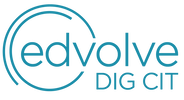




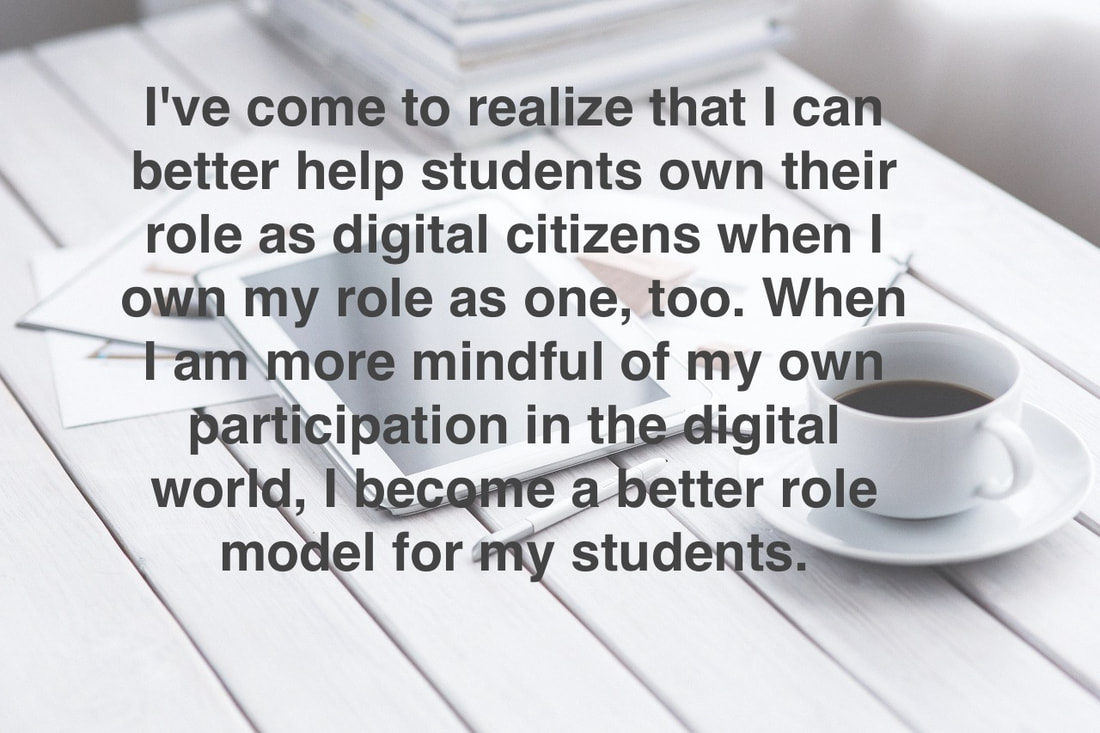
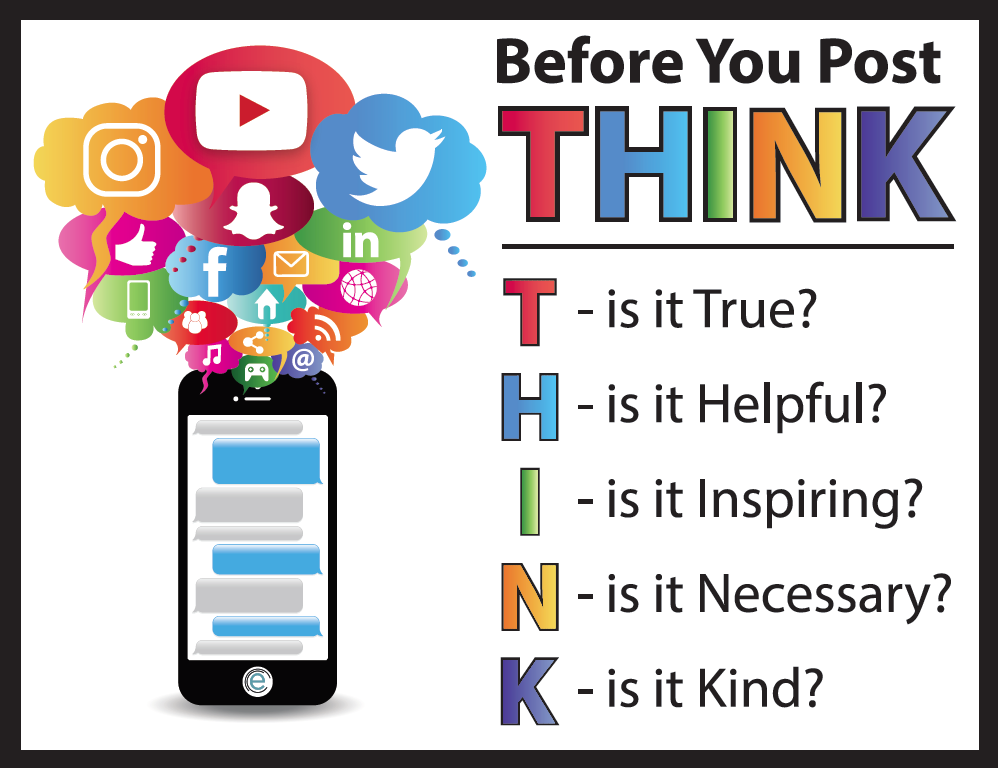

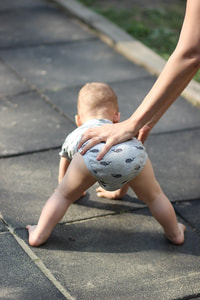







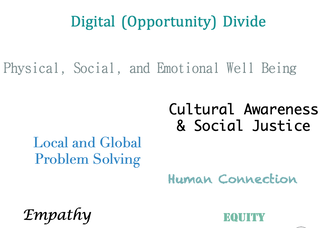

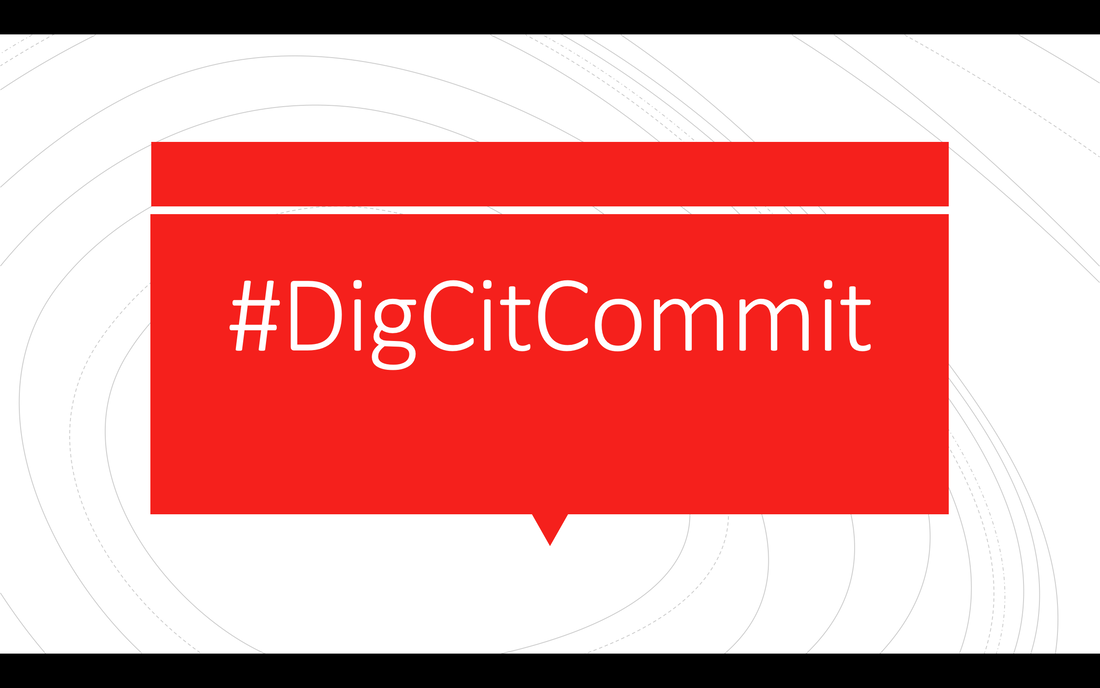
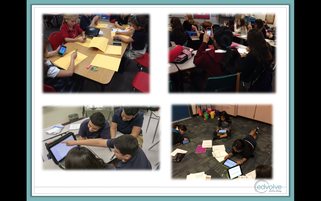

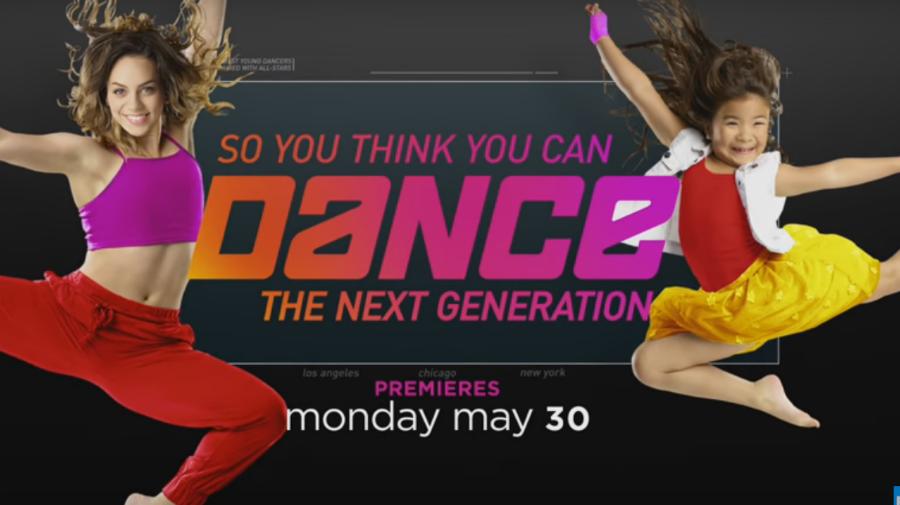
 RSS Feed
RSS Feed
